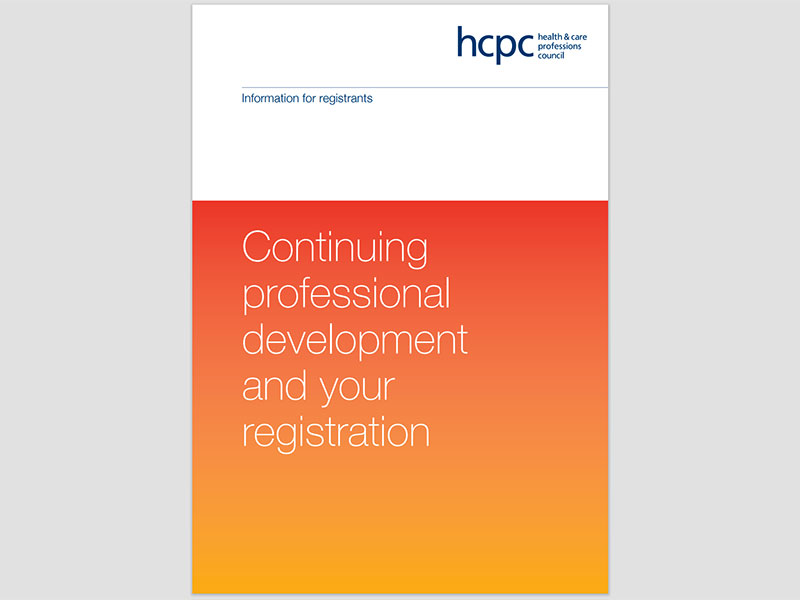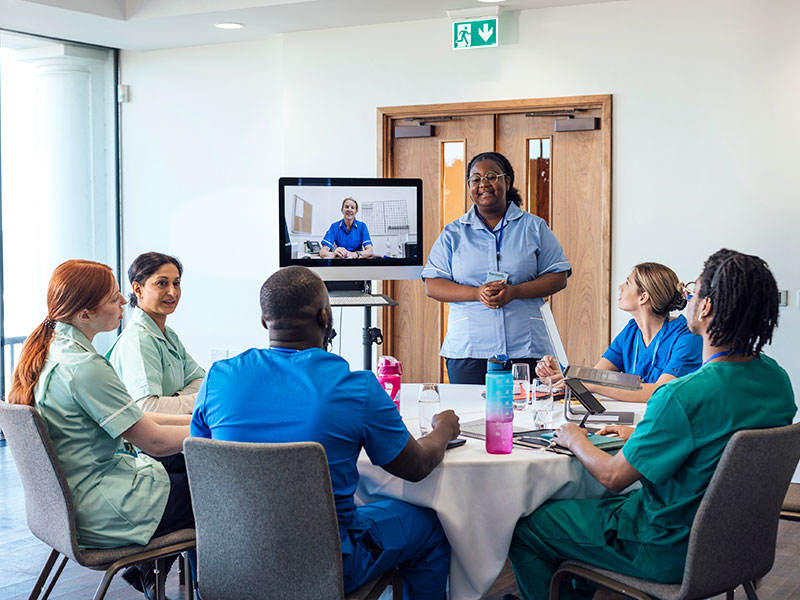A flexible approach based on outcomes
We have developed our approach to CPD to be flexible enough to take account of the range of different health and care professionals registered with us, different working roles and learning needs and variation in registrants’ access to certain types of CPD.
We do not set a number of hours or points that you have to complete and we do not ‘approve’ or ‘endorse’ any CPD activities.
Instead we want you to identify your development needs and choose appropriate activities to help you meet them.
Many people tend to focus on formal courses, but CPD is any activity from which you learn and develop- not just course attendance. In fact, the more variety you have, the better, as we’re looking for evidence of a range of activities.
We are much more interested in the outcomes of your learning and how this has benefited your practice and the service users you work with. This means that you can plan your CPD based on the kinds of activities that are most relevant to you and your practice.
Meeting the CPD standards
CPD is a requirement of your registration, so you need to meet our CPD standards to stay registered. You need to do the following:
- Carry out regular CPD and keep a record of what you do in the way that is most convenient for you
- Carry out different kinds of learning activities
- Think about how your CPD might improve your practice and benefit your service users
- Take part in an audit if we ask you to. We audit a random sample of each profession at every renewal
The standards in more detail
Our standards of continuing professional development set out what we expect and require of registrants’ continuing professional development. They are as follows:
Registrants must:
-
What the standard means- You need to carry out regular CPD activities – you can find examples of these here.
- You need to keep a record of what you do in whatever way is most convenient for you.
- You need to add to your record on an ongoing basis. If you are audited, we will be interested in what you have done over the previous two years (the length of each registration cycle).
- Your record needs to be a true reflection of the activities that you have carried out.
Keeping your record
We do not ask for a set format for recording your CPD. You might choose to keep a binder or folder including documents such as certificates and notes that you have kept relating to your CPD, or you might keep this record electronically. You might follow a format provided by your professional body or by your employer. Please make sure that you can access your record – for example, in case you leave your employer.
This is your personal record. We will not ask to see a complete copy, but if you were audited, we would ask you to give us details of the activities you have completed over the previous two years and send us some supporting evidence. So keeping a good record will mean that you can do this easily.
-
What the standard means- Your CPD must include a mixture of different types of learning.
- Your CPD must relate to your registration and practice as a health and care professional.
Mixture of activities
Your CPD must include a mixture of different types of learning. This means that you need to carry out at least two different types of learning activity. In practice, most registrants will carry out many different types of learning while registered with us. We have provided a longer list of possible CPD activities in appendix 1.
If you were audited and had only carried out one type of learning – for example, if you had only read professional journals but had not carried out any other kind of learning – you would not meet this standard.
Your practice
Your CPD must be relevant to your current or future practice. This means that your
CPD should be related in some way to your registration as a health and care professional.Your CPD will be relevant to your practice so will be individual to you. For example, if you are managing a team, some of your CPD might be based around your skills as a manager. If you work in private practice, some of your CPD might be about the skills you need to run a successful practice.
Your CPD can also support your career development. So some or all of your CPD might be about preparing you for a future role.
If you have an annotation on the Register (for example, in prescribing), we would particularly encourage you to consider whether you need to complete some CPD activities to keep up to date in this area of practice.
You are able to make your own decisions about the CPD that is most beneficial to you, your practice and your future career ambitions.
Interactive activities
There is some developing evidence that suggests that the most effective learning activities are often those that are ‘interactive’ and which encourage ‘self-reflection’. For example, ‘peer discussion’ is a term used to describe opportunities to discuss practice issues with groups of professional colleagues. Although this is not a specific requirement, we would encourage you to look for opportunities to learn and reflect on your practice with others.
-
What the Standard means– You should aim for your CPD to improve the way you work.
– If you were audited, we would ask you to tell us about some of the activities you have carried out, what you learnt and how this has improved your practice.Quality of practice and service delivery
Your CPD should lead to you making changes to how you work which improves the service that you provide.
You do not necessarily have to make drastic changes to how you work. Some CPD
activities might mean that you continue to work as you did before, but that you are more confident that you are working effectively. Others might help you gain new or improved skills or help you to make changes to working practices.‘Seek to ensure’
We use the term ‘seek to ensure’ in standard 3 because there may be some instances where the CPD activity you carried out to improve your practice is not as effective as you thought it would be. You cannot always anticipate the actual benefits of CPD activity. The important thing is to consider why the activity was not as helpful as you thought it would be, and how you might do things differently in future. As long as you can explain this if asked, you will still meet this standard.
-
What the standard means– You should aim for your CPD to benefit your service users.
– If you were audited, we would ask you to tell us about some of the activities
you have carried out, what you learnt and how this has benefited your service users.Benefits the service user
For the purposes of this standard, we define a ‘service user’ as anyone who uses your
services or is affected by your work.Who your service users are will depend on how and where you work. For example:
– if you are in ‘front line’ or laboratory based practice, your service users might
include patients, clients, carers, other professionals and others you provide services to;– if you work in education, your service users might include your students; and
– if you are a manager, your service users might include the team that you manage.
The above is not a full list, so you will need to think about who your service users are.
Your CPD should lead to benefits for your service users. These benefits do not need to
be radical and in many cases may simply be a result of improvements you have made to
your practice. For example, a CPD activity has improved your practice because you have gained new skills, and as a result you are able to provide a better service to your service users. This standard is asking you to think about how your CPD has benefited those who you work with and who are affected by your practice.‘Seek to ensure’
We use the phrase ‘seek to ensure’ in standard 4 because you might carry out a CPD activity to provide benefits to service users, but find that it is not as helpful as you had expected. As long as you think about why the activity was not useful and what you might do in future instead, and can explain this if asked, you will still meet this standard.
Third-party feedback
Asking for, receiving and reflecting on feedback from service users and peers can help improve practice and help to identify future learning needs.
Although this is not a specific requirement, we would encourage you to ask for and reflect on feedback from service users and others if you are able to. This feedback can also be a useful piece of evidence to support the fact that you have met standard four (see section six).
-
What the standard means– You only need to meet this standard if you are one of the registrants picked as part of a random sample for audit.
– You need to take part in the audit by sending us a CPD profile containing information and evidence about how you have met the standards.
– The CPD profile must be your own work.
We explain more about taking part in an audit and completing a CPD profile in sections five and six.
Your own work
If you are audited, the CPD profile must be your own work. A profile which was written by someone else, or included text from profiles produced by others, would not meet this standard.
If we suspect that a CPD profile is not your own work but, for example, includes plagiarised material, we would stop the assessment process and investigate this under our fitness to practise process.
This does not mean that you cannot ask a colleague for help and we would encourage you to discuss your CPD audit with your colleagues if you feel you need help.


